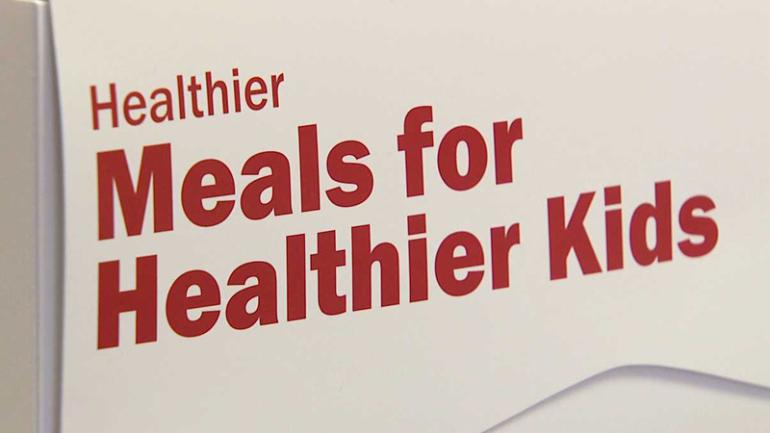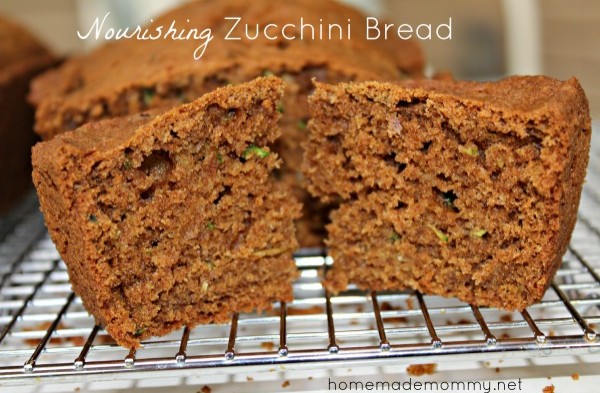The best way to ensure you and your family and friends only consume organic, untainted and nutrient-rich foods is to grow your own herbs, fruits and vegetables. This can be done in the smallest of plots or even on a balcony, roof garden or windowsill with a raised box or pots and other types of planters. Outside , fences, railings and walls can be utilised with canvas pocket planters, mounted boxes and hanging baskets etc.
A very good way to grow food, especially for those less able, is to have raised beds built. These can easily be made from old pallets and can be two or three feet high to provide an easily accessed planter even for those that are wheelchair bound. If these beds are surrounded with gravel and sharp sand paths it will also deter garden pests like slugs and snails. Protect the wood used for planters using wood treatment made from natural linseed oil which has excellent preservative properties and water resistance and is harmless to wildlife and humans.
PLANNING YOUR ORGANIC FOOD GARDEN
When planning a garden it is important to add as many native plants as possible to support the local wildlife and beneficial insects and bees that will pollinate the herbs, fruits and vegetables you want to grow. Filling your outside space with alien species simply for their looks or colour is a sorry waste of valuable space that could feed native flora and fauna as well as your family and friends.Growing plants from seeds is very rewarding and, during the first year, seeds can be collected from home-grown plants and are therefore free. Always purchase organic seeds.The easiest edible plants to begin growing are bell peppers, chilli peppers, broad and runner beans, herbs, peas, strawberries, sunflowers and tomatoes. These can all be grown in pots or other containers. In small spaces use a large container or pot with a cane tee pee to grow beans and peas along with sweet peas to help attract pollinating insects.Potatoes are a good first crop when growing directly in the soil as they will break up the soil and add nutrients future grown vegetables will require.What many consider as weeds are often very powerful medicinal plants, such as nettlesand dandelions. Grow them in a container to stop them spreading. See the Herbs and Spices page for more plants that can be used medicinally.Certain plants should be avoided in the home and garden, if there are animals or young children around, as they are poisonous. See Nature Cures For Pets.FEEDING THE PLANTSIt is important to feed your plants once they are established to gain the most nutrients. These nutrients come out of complex organic matter as soil bacteria breaks it down and are then taken up by the plants.Chicken pellets: These have a high nitrogen content and are a good all round soil improver. Fresh chicken manure must only be added to a compost heap whilst the dried and heat treated pellets can be added to the soil around most fruits and vegetables especially leafy crops like cabbage, celery, salad crops as well as courgettes, fruit bushes, potatoes, rhubarb and sweet corn.
Fish blood and bone meal: Blood meal provides nitrogen and does not take long to break down. Fish meal provides nitrogen and phosphorus and potassium and bone meal provides mainly phosphorus with some nitrogen and calcium. It is a good all round fertiliser for fruit bushes and trees, herbs and vegetables and should be added to the soil early in the year before plants become vigorous with leaf growth.
Manure: All types of animal, and even human faeces, are excellent soil improvers as the soil microbes break them down and release the nutrients which then feeds the plants. However, it is important to only use manure that comes from organically reared animals as the antibiotics and other chemicals used in farming can be absorbed by plants and then consumed by humans. Fresh manure must be rotted in a compost heap for twelve months before using on plants. Well rotted manure can be used to improve the soil before planting and as a mulch after plants are established.
Seaweed and kelp: This is a very useful fertiliser for mulching plants with as it also deters aphids, slugs and snails as well as greatly improving the soils nutrients. It is always best to keep mulch away from direct contact with the stems of plants.
Water: Rain water is always best to use for vegetation as it contains many of the nutrients they require so it is a good idea to install water butts on all available drainpipes. Installing an irrigation system is an economical way to water plants as it can work on a timer at night and a humidity sensor can control it and it can also be connected to water butts. This means that plants will always have all the water they need with no effort required. Drip feeds on the soil are best as spraying water loses much to evaporation and can burn the leaves of plants if done during hot sunshine.
GARDEN PESTSA bird feeding station is important to attract birds as these will consume many garden pests such as caterpillars, slugs and snails.A pond is a valuable asset as it too will encourage the wild life that can help to control pests. Frogs, dragonflies, damsel flies, newts and toads will consume many of the unwanted garden pests encountered in a vegetable, fruit and herb garden.
COMBINATION PLANTS FOR PEST CONTROL
The following plants will protect against the aphids and other bugs that can attack the mentioned vegetables.
ANTS, APHIDS, BLACK FLY, GREEN FLY, SPIDER MITES AND WHITE FLY
Aphids can attack a wide variety of plants depending on their species. Many will thrive upon beans, cabbage, cucumber, melons, peas, potatoes, pumpkin, squash and tomatoes. Green aphids thrive on on roses, grey ones on brassicas, black ones on broad beans and white ones on box hedges.
Ants protect aphids as they feed on the honeydew aphids produce so must also be removed. Control ants by trimming the lower parts of the plant so that they do not touch the ground and give ants easy access. The use of an organic aphid control pesticide, such as neem oil, will take care of the ants as well. Vinegar can help to remove the trails ants leave to use as a pathway to their feeding places. Dilute a tablespoon of vinegar with water in a sprayer and spray on to the pathways they use near to vegetables.
Spider mites thrive upon asparagus, beans, melons, squash and other cucurbits, peas, tomatoes and strawberries, as well as several weed species. The same methods can be used to remove them as with aphids.
Attracting the following beneficial insects to the garden is a natural way to kill aphids and spider mites. One ladybird will consume 5000 aphids during its year long lifetime.
|      
A pond creates a balanced habitat for wildlife in the garden.
|
- ASSASSIN BUG (Reduviidae)
- BIG EYED BUGS (Geocoris)
- DAMSEL BUG (Nabidae)
- DAMSELFLY (Zygoptera)
- DRAGONFLY (Anisoptera)
- ENCARSIA WASPS (Encyrtidae)
- GALL MIDGE (Aphidoletes aphidimyza)
- HOVERFLY (Syrphidae)
- LACEWING (Chrysopidae)
- LADYBIRD (Hippodamia convergens, Coccinellidae, ladybugs)
- MINUTE PIRATE BUG (Anthocoridae)
- PARASITIC WASPS (Trichogrammatidae)
- PRAYING MANTIS (Mantodea)
- SOLDIER BEETLE (Cantharidae, leatherwing)
- STINK BUGS (Pentatomidae)
Nearby plantings of the following will help to attract these beneficial insects to your garden, if left to flower, as many insect predators also consume pollen..
- CARAWAY
- CARROTS
- CELERY
- CORIANDER
- COW PARSLEY
- DANDELION
- DILL
- FENNEL
- GOLDEN MARGUERITE
- LOVAGE
- MINT
- PARSNIPS
- PARSLEY
- YARROW
Planting of the following plants that are attractive to aphids are good for organic aphid control. Growing these in a separate space from fruit and vegetables will lure aphids away.
- ASTER
- BEGONIAS
- CHRYSANTHEMUMS
- COSMOS
- DAHLIAS
- GERANIUMS
- HOLLYHOCKS
- LARKSPUR
- ROSES
- VERBENA
- ZINNIA
Chives, garlic and onions will also help to deter aphids as they do not like the odour.
Stinging nettles can be used as an aphid killer. Soak half a pound of nettles in a bucket of water for a week, before straining and using undiluted to control aphids.
Adding a very small amount of washing up liquid to a sprayer filled with water can be used to wash off aphids and other pests that attack some vegetables without contaminating the vegetables and fruits but should only be used very sparingly for vast outbreaks because it will also kill the beneficial insects. A few aphids will not cause too much damage and are part of the balance of a healthy vegetable garden. Rubbing them off with the fingers or plain water in a powerful sprayer is the often enough to keep them at bay.
CARROT FLY
Carrots can be grown in a container that is more than two feet deep such as a plastic refuse bin as carrot flies cannot fly higher than two feet above the ground. Cut some holes in the bottom of the bin then add a layer of stones or broken pots for drainage. Then add sieved stone free soil and top with a good potting compost before sowing your organic carrot seeds. Grow some spring onions around the edges to provide even more protection.
SLUGS AND SNAILS
When disposing of snails it is pointless to simply throw them into your neighbours garden as they have a homing instinct and will return the next night. Never use salt to kill slugs and snails as this causes them great pain for some time before they die.
BEER TRAPS: Slugs and snails are attracted to beer so a small jar half filled with beer will trap and drown them so that they can be disposed of on the compost heap or a bird table.
COFFEE GROUNDS: These can be sprinkled around plants as a safe deterrent but do not use too often.
COPPER: Slugs and snails get electric shocks from copper so it is a useful tool to stop them getting near to your vegetables. Self-adhesive copper bands can be used around pots and planters.
DIATOMACEOUS EARTH AND SHARP SAND: Diatomaceous earth comes in the form of a chalky powder, and is the natural fossilised remains of diatoms, a type of hard-shelled algae. Both this powder and sharp sand make a good barrier to slugs and snails as they can not easily cross it if it is sprinkled around vegetables or planters and raised beds.
ELECTRIC FENCE: Small electric ribbons which run off a nine volt battery can be purchased and set up around vegetables. When a slug or snail comes in contact with the fence, it receives a mild static sensation that is undetectable to animals and humans. This does not kill the slug but causes it to look elsewhere for forage.
GRAPEFRUIT AND FLOWERPOT TRAPS: Place half a grapefruit skin or a flower pot upturned near to your vegetables with a small stone to raise one side. This will attract slugs and snails which can be disposed of the morning. The grapefruit scent attracts them so is often a better solution. A wide plank can be used in the same way as slugs and snails will use it for shelter during the day.
LAVA ROCK: Lava rock can be used as a barrier around plantings, but should be left mostly above soil level, otherwise dirt or vegetation soon forms a bridge for slugs to cross.
SEAWEED: Seaweed has the added benefit of adding nutrients to the soil if used as a mulch around vegetables. Pile it on 3" to 4" thick - when it dries it will shrink to just an inch or so deep. Seaweed is salty and slugs and snails avoid salt. Push the seaweed away from plant stems so it's not in direct contact. During hot weather, seaweed will dry and become very rough which also deters the slugs.
WATERING SCHEDULE: If watering is only done in the early morning the soil dries out by the time snails and slugs become active at night. This can reduced slug and snail attacks by 80%.











